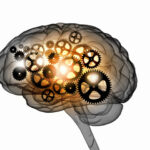A recent report by Psychology Today reveals that “Rates of depression and anxiety among young people in America have been increasing steadily for the past fifty to seventy years.” According to some estimates, at least 5 to 8 times more high school and college students meet the diagnostic criteria for depression and anxiety disorders than was true almost half a century or more ago. Initially, one might assume that this increased psychopathology could be due to a change in diagnostic criteria, however, it holds even when the measures and criteria used are constant.
Anxiety and Depression on the Rise for Young People
The most recent evidence of this rise in depression and anxiety for young people comes from a recently released study from Jean Twenge at San Diego State University. Twenge and her colleagues utilized information from the Minnesota Multiphasic Personality Inventory, or MMPI, which has been administered to large samples of college students since 1938, and the MMPI-A, which provided data from younger adolescents of high school age since 1951, to determine changes in the reported mental health of these populations over time. Her results are consistent with other studies which reveal dramatic increases in anxiety and depression, in both children and young adults, over the last 5 or so decades.
Dr. Peter Gray, research professor at Boston College, writes: “We would like to think of history as progress, but if progress is measured in the mental health and happiness of young people, then we have been going backward at least since the early 1950s.” But why? Interestingly, this increased psychopathology seems to have little correlation with more realistic dangers like changes in economic cycles, wars, or any other world changing events. In fact, rates of anxiety and depression in younger populations were much lower during the Great Depression, World War II, the Cold War, and the politically turbulent 1960’s and 70’s. What does this show? That perhaps feelings of anxiety and depression are more connected to how these young people view the world than the state of the world itself.
Anxiety as a Response to Self Control
In fact, these feels of anxiety and depression seem to strongly correlate with the individual’s own feelings of control or lack thereof over their own lives. As Dr. Gray explains: “People who believe that they are in charge of their own fate are less likely to become anxious or depressed than are those who believe that they are victims of circumstances beyond their control.” One might think that sense of personal control has increased over the past few decades. However, while progress has occurred in our ability to prevent and treat diseases, reduce the old prejudices which once limited citizens on the basis of race, gender, and sexuality, and increase wealth, feelings of control over their own lives has actually declined significantly within the past decade.
Measure of sense of self-control is measured through a questionnaire which was created in the late 1950s by Julien Rotter, called the Internal-External Locus of Control Scale. The questionnaire consists of 23 pairs of statements. One statement in each of the pairs represents belief in the internal locus of control, or control by the person, while the other represents belief in the external locus of control, or control of circumstances outside the person. The individual taking the questionnaire must determine which of the statements they feel to be more true. Dr. Gray provides the following example: “(a) I have found that what is going to happen will happen. (b) Trusting to fate has never turned out as well for me as making a decision to take a definite course of action. In this case, choice (a) represents an External locus of control and (b) represents an Internal locus of control.”
The Importance of Play
Studies have shown that a rise in externality and decrease in internality leads to anxiety and depression. After all, if we feel as though less things are in our control it may lead to feelings of distress. When feelings of anxiety and helplessness become too great it can lead to the development of depression. But why are children experiencing decreased internality? Signs point to a correlation between decreased play time. Playtime allows children time to explore and act independently from adult direction, but unfortunately, the amount of playtime children are allotted has decreased significantly within recent decades. Dr. Gray describes this essential time as being “ the means by which children learn to solve their own problems, control their own lives, develop their own interests, and become competent in pursuit of their own interests.” Thus a decline in this developmental time for children has lead to a deprivation in allowing children the opportunity to learn how to take control of their own lives. Even with the best intentions, Dr. Gray believes that while “we may think we are protecting them, but in fact we are diminishing their joy, diminishing their sense of self-control, preventing them from discovering and exploring the endeavors they would most love, and increasing the chance that they will suffer from anxiety, depression, and various other mental disorders.”
Even in schools, less time is allotted for play than for more regimented curricular and extracurricular activities. Through this, children learn that what they want is insignificant when compared to what adults what for them. They are directed, organized, and ranked according to the expectations set by adults, thus, their sense of self is largely defined by others. In fact, Dr. Gray describes modern schools as being “a place where children have little choice about with whom they can associate. They are herded into spaces filled with other children that they did not choose, and they must spend a good portion of each school day in those spaces. In free play, children who feel harassed or bullied can leave the situation and find another group that is more compatible; but in school they cannot. Whether the bullies are other students or teachers (which is all too common), the child usually has no choice but to face those persons day after day.” The results of which, he notes, are disasterous.
That’s not to say that schooling and education aren’t important, however, and beneficial to the intellectual development of children and young adults. Rather, allowing kids the freedom to play and develop as individuals can enhance their education by instilling a willingness and motivation to be educated rather than depriving them of any choice. Perhaps by reinstating playtime and emphasizing its importance in the development of our children, we can collectively reverse the rising rates of anxiety and depression by allowing them the self-control they need to be both happy and healthy.




